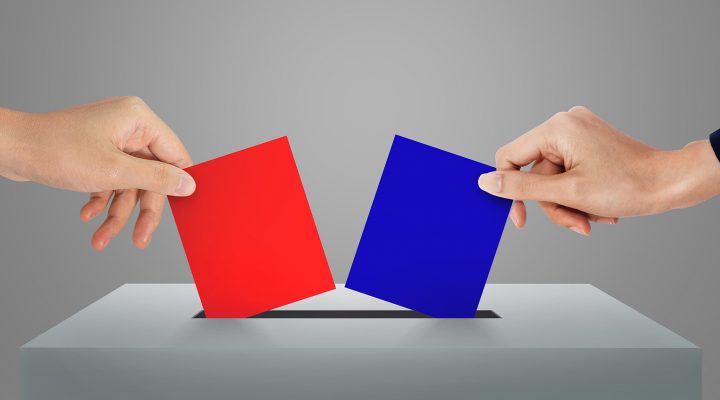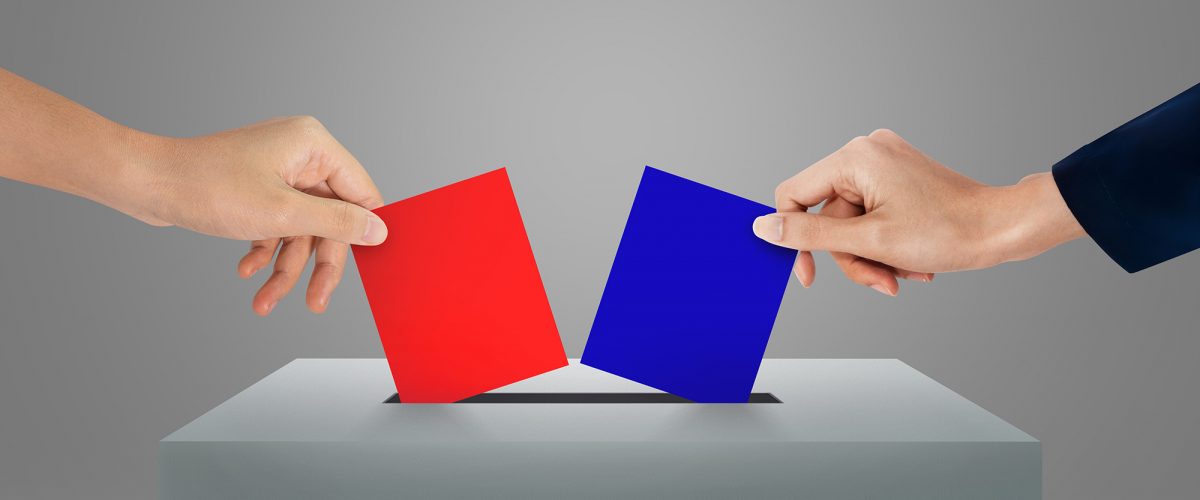A recent Pew Research study shows racial and religious demographic changes are having significant effects on both the Republican and Democratic parties.
Amid a contentious election year, Pew’s most recent findings show American views toward partisanship have shifted tremendously between 1994 and 2023. The past 30 years have seen a coarsening of tensions, political violence, increased immigration among the Hispanic and Asian demographics, and a rapid decline in religious adherence.
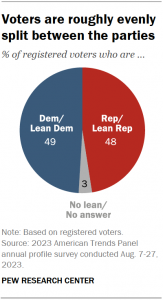 Among the findings is that an increasing number of voters hold a bachelor’s degree — with 63% of less-educated whites skewing Republican — and women skew 51% Democratic compared to 44% Republican, with that number dropping to 24% Republican among unmarried women. Voters among the 18 to 24 demographic skew 66% Democratic to 34% Republican. Rural voters are continuing to skew Republican by a 25-point advantage.
Among the findings is that an increasing number of voters hold a bachelor’s degree — with 63% of less-educated whites skewing Republican — and women skew 51% Democratic compared to 44% Republican, with that number dropping to 24% Republican among unmarried women. Voters among the 18 to 24 demographic skew 66% Democratic to 34% Republican. Rural voters are continuing to skew Republican by a 25-point advantage.
The most significant changes have been internal, with societal shifts altering the makeup of both parties. The balance of Republicans (48%) and Democrats (49%) has remained mostly the same, with neither side gaining a significant edge against the other overall.
“Many of the factors long associated with voters’ partisanship remain firmly in place,” Pew reports. “For decades, gender, race and ethnicity, and religious affiliation have been important dividing lines in politics. This continues to be the case today. Yet there also have been profound changes — in some cases as a result of demographic change, in others because of dramatic shifts in the partisan allegiances of key groups.”
Race and religion
Racially speaking, both parties have become more diverse in the past two decades, but the Democratic Party has seen greater increases in diversity than the Republicans. Among nonwhite voters — meaning Hispanics, Blacks, Asians and others — 20% of the Republican Party is nonwhite compared to 44% of Democrats. White voters have decreased as a total percentage of the American electorate from 85% to 67% in the past 30 years.
Religiously speaking, white evangelical Protestants now skew 85% Republican to 14% Democratic. This marks a significant shift from 1994, when the divide tilted more modestly Republican, 65% to 33%. Today, 81% of Republicans identify as Christian, which marks a slight decrease from 86% in 2008. Also today, 54% of Democrats identify as Christian, down from 74% in 2008.
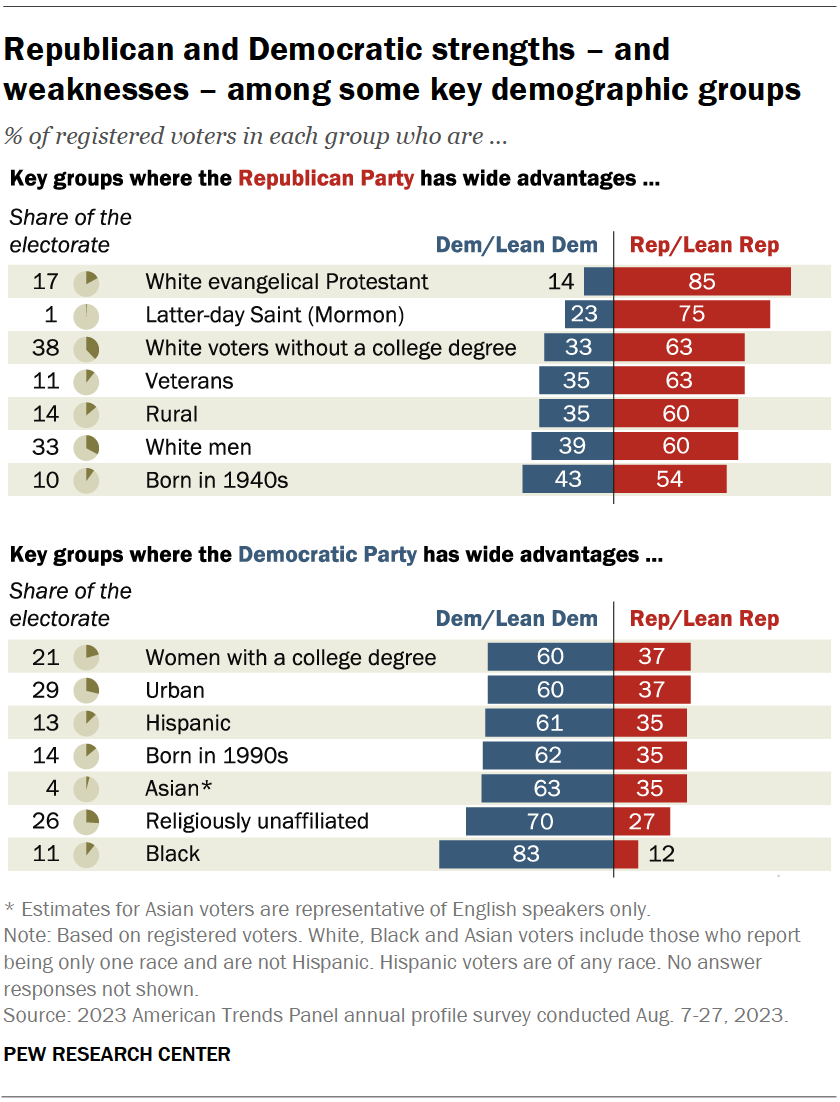
The increase in atheist, agnostic and “none” (nothing in particular) demographics has coincided with a skew toward the Democratic Party (70%) among religiously unaffiliated voters. Atheist support for Democrats increased slightly from 81% to 84% between 2005 and 2024.
Attending regular religious services statistically correlates with skewing Republican, while disbelieving skews toward Democrats.
 “This pattern has been evident for many years,” Pew notes. “However, the share of voters who identify as Republicans or lean Republican has edged up in recent years. For white, Hispanic and Asian voters, regular attendance at religious services is linked to an increase in association with the Republican Party. However, this is not the case among Black voters. … Black Protestants are an exception to this pattern. Black Protestant voters who attend religious services monthly or more often are no more likely to associate with the Republican Party than less frequent attenders.”
“This pattern has been evident for many years,” Pew notes. “However, the share of voters who identify as Republicans or lean Republican has edged up in recent years. For white, Hispanic and Asian voters, regular attendance at religious services is linked to an increase in association with the Republican Party. However, this is not the case among Black voters. … Black Protestants are an exception to this pattern. Black Protestant voters who attend religious services monthly or more often are no more likely to associate with the Republican Party than less frequent attenders.”
Comparatively, Black Protestants lean Democratic 84% to 11%, while Hispanic Protestants lean slightly Republican, 45% to 49%. Protestants generally lean Republican, 59% to 38%, compared to Catholics at 52% to 44%. Jewish voters lean Democratic 69% to 29%, while Muslims lean Democratic 66% to 32%.
The 2024 election and beyond
Generally speaking, whites and evangelicals are skewing Republican, while Blacks, nonreligious, Muslims and Jewish voters are skewing Democratic. While this was largely true 20 years ago, the divide has only grown wider, Pew says.
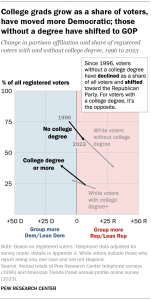 The evolving nature of this partisan divide will likely continue to affect American politics going forward, with Asian and Hispanic immigration and an increasing Democrat skew among young voters suggesting a bump for the Democrats in future elections. However, increased Republican support among Hispanics could level this.
The evolving nature of this partisan divide will likely continue to affect American politics going forward, with Asian and Hispanic immigration and an increasing Democrat skew among young voters suggesting a bump for the Democrats in future elections. However, increased Republican support among Hispanics could level this.
Regardless, the increased racial and religious polarization among Americans stands to push voters into political alliances more in line with their identities than before.
“The steadily growing alignment between demographics and partisanship reveals an important aspect of steadily growing partisan polarization,” Pew reports. “Republicans and Democrats do not just hold different beliefs and opinions about major issues, they are much more different racially, ethnically, geographically and in educational attainment than they used to be.”
It remains to be seen how these changes will affect the 2024 election. After the U.S. Supreme Court’s 2022 Dobbs decision, abortion has continued to activate female voters who skew toward legalizing abortion. Pew separately notes that public support for abortion skews in favor by 63% to 36%. White evangelical Protestants (25% in favor) and white nonevangelical Protestants (64% in favor) lean in different directions over the issue, while 86% of nonreligious affiliated voters lean in favor of abortion access.
Related articles:
Republicans are becoming more conservative, which is making America skew more conservative

